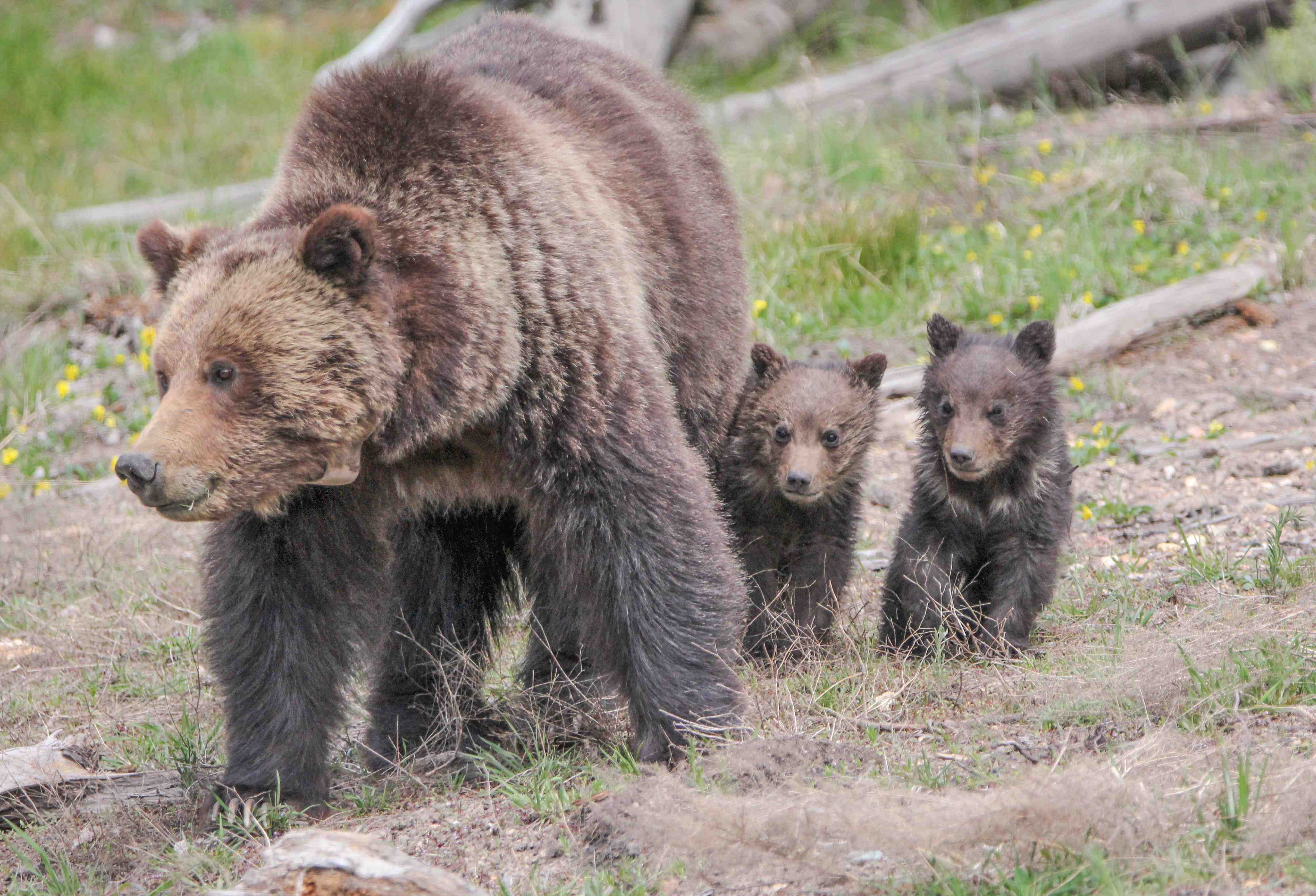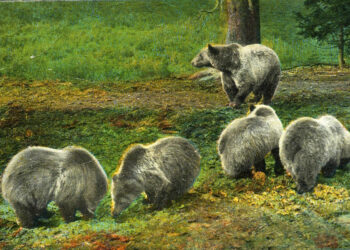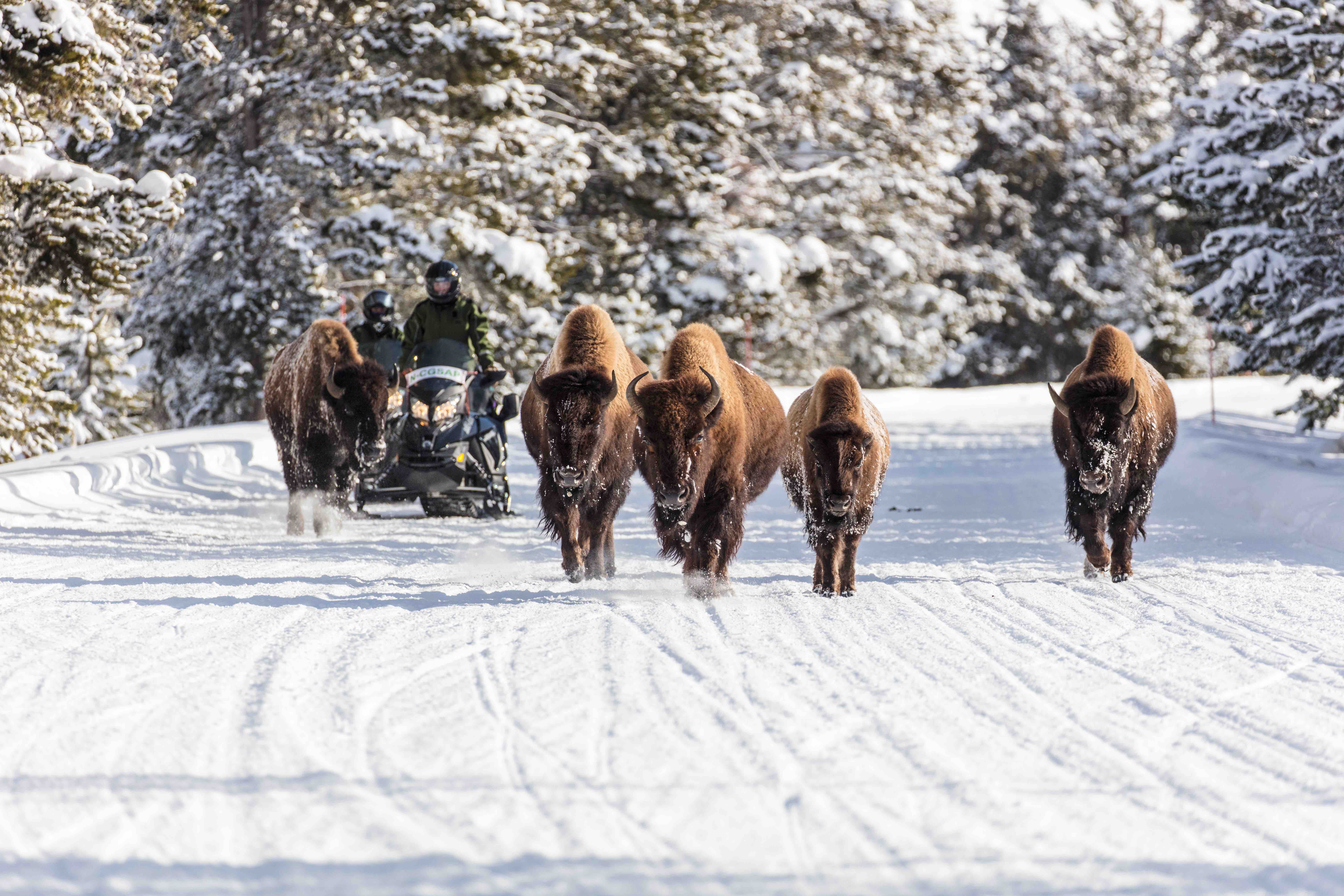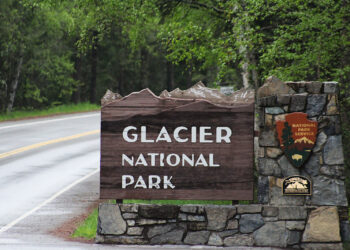By Jessianne Wright EBS Contributor
BOZEMAN – As a population newly removed from the Endangered Species List, the Greater Yellowstone grizzly bears are considered recovered and are ready to be managed as wildlife, say wildlife officials.
“The Yellowstone Ecosystem is a totally recovered population,” said Gregg Losinski, chair of the Yellowstone Ecosystem Information and Education Subcommittee with Idaho Department of Fish and Game. Genetically, the population is healthy, he added.
The Interagency Grizzly Bear Study Team reported there are an estimated 718 grizzly bears in the Greater Yellowstone Ecosystem during the first meeting of the Yellowstone Grizzly Coordinating Committee on Nov. 30-Dec. 1 in Pray, Montana.
Frank van Manen, an IGBST research wildlife biologist who prepared the population report, said the estimate is meant to be conservative. “When we say 718, that number is probably closer to 1,000,” van Manen said.
Researchers have been rigorously tracking the GYE grizzlies since 1973, van Manen added. With such an extensive data set, researchers have been able to create statistical models that underestimate the total bear population once observations and radio collar data are entered into the system.
“You’d rather underestimate than overestimate,” van Manen said.
In recent years, GYE grizzly bears have been expanding their territory, and bears are being found in places where they haven’t been seen in decades. “We’re basically reaching the carrying capacity,” van Manen said.
“They’re running out of places [within the GYE],” he added. “They’re kind of forced out there. There’s no place for young bears to establish home ranges of their own. Those are the bears that get into less suitable habitat, get in trouble and usually end up dead.”
According to Losinski, with the delisting of the grizzly, managers will have added flexibility in managing the bears, which are reaching high densities in particular areas of the GYE.
“When you’re trying to recover a species, you’re looking at maximizing your output of animals,” Losinski said. “In this case, [grizzlies] did that really well on their own and are now spreading into new territory. Now it is conflict reduction.”
Much of that conflict resolution falls to the Wyoming Fish and Game Department. In 2016, Wyoming recorded 223 cases of conflict between grizzlies and humans, followed by Montana with 118 and Idaho with two.
In recent months, the Wyoming Fish and Game Department has been responding to grizzly bear sightings and encounters in areas near Cody where bears haven’t been seen in decades. One bruin was relocated to the Caribou-Targhee National Forest; another that was damaging private property west of Cody was relocated to the Bridger Teton National Forest.
Despite six pending lawsuits against the grizzly bear delisting, the YGCC is charged with following the conservation strategy for the grizzly bears of the GYE, which was approved at the end of 2016 and is an outline for managing the delisted population.
“There’s no question anymore about listed or delisted,” said Mike Volesky, deputy director at Montana Fish, Wildlife & Parks. “We have to assume that we have a delisted population [and consider] how do we maintain that and how do we make sure grizzlies are preserved.”
Key aspects of the conservation strategy include maintaining at least 500 bears in the GYE; monitoring the distribution of sow grizzlies with cubs; and monitoring bear mortality each year. The committee is also tasked with meeting defined genetic management objectives.
“The main point is to maintain a healthy population in the ecosystem,” Losinski said. “It would be nice to see a linking with other subpopulations. … Bears are doing good, but they can’t do any better if the ecosystem won’t allow them to.”
Unique among other wildlife, the grizzlies of Greater Yellowstone will be managed cooperatively, at least for the first few years. Montana, Wyoming and Idaho have agreed to manage the bears as a team, “which is something we do not do for any other species,” Losinski said.
Specific steps that might be considered in the future for grizzly management include building vehicle overpasses to allow bears to more readily expand into suitable habitat; increasing public education for those living in high-density bear areas; and allowing regulated hunting when and where appropriate.
With focus shifting from recovery to management for the GYE grizzly bears, Losinski says he’s ready to focus on other ecosystems that are also trying to recover grizzly bear populations, such as the Bitterroot Ecosystem and the Selkirk/Cabinet-Yaak Ecosystems.
“As long as the Yellowstone population is the focus of this effort, those other recovery areas do not get the help they need,” he said.












